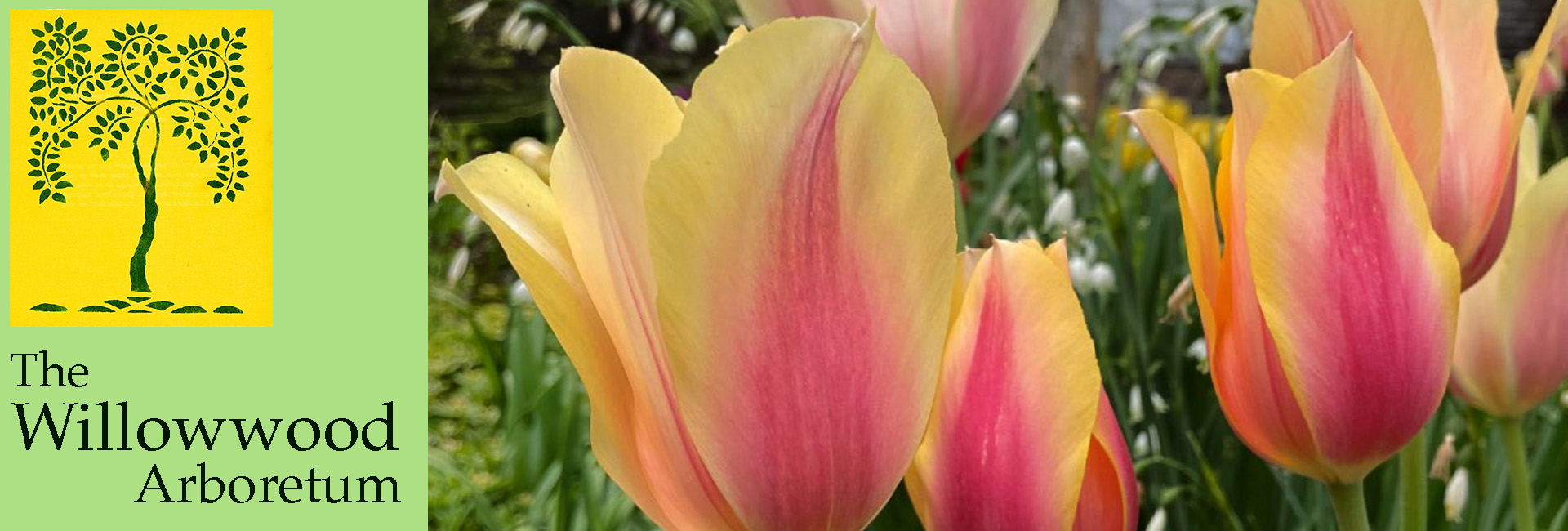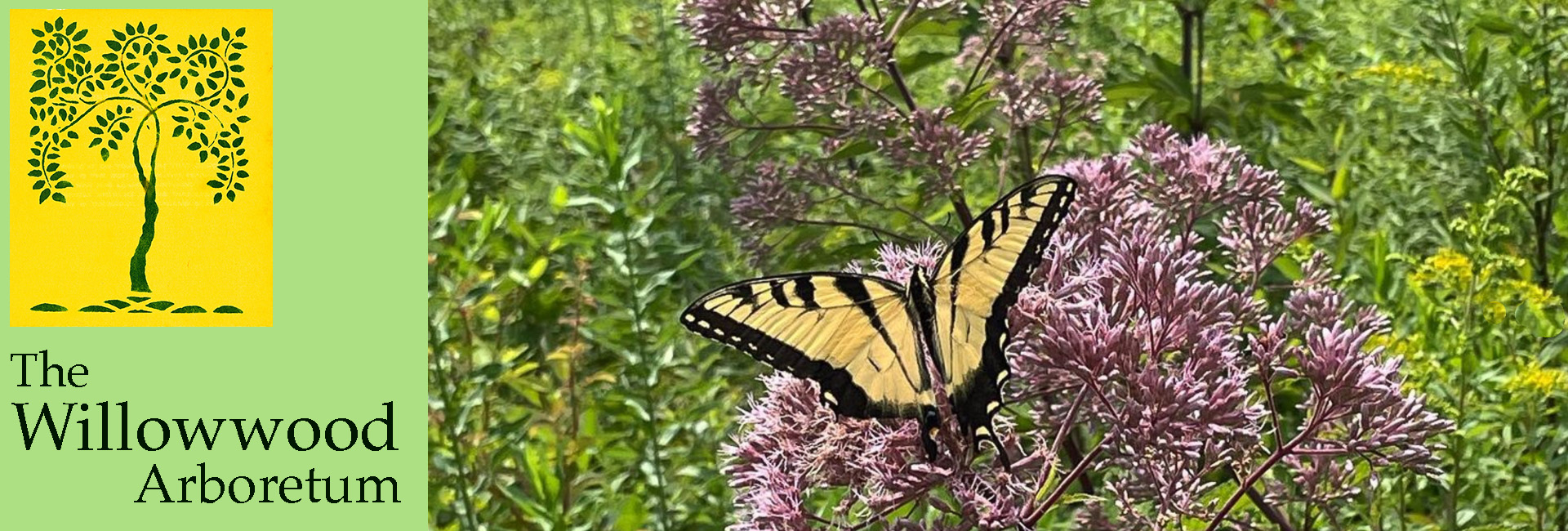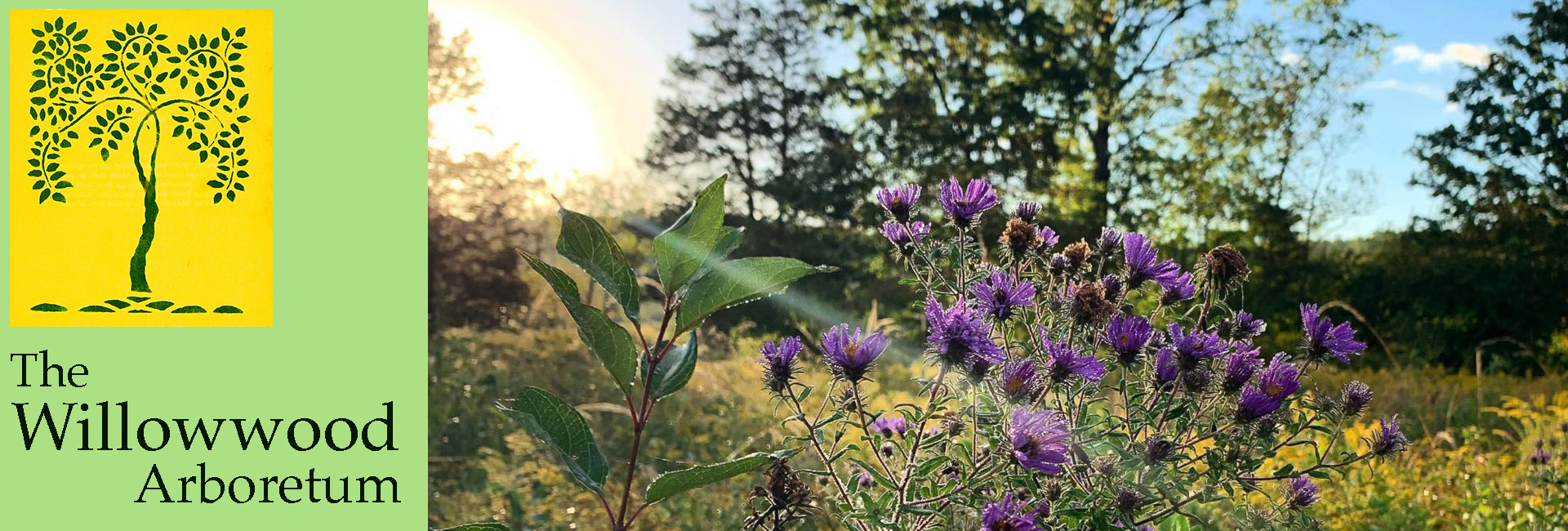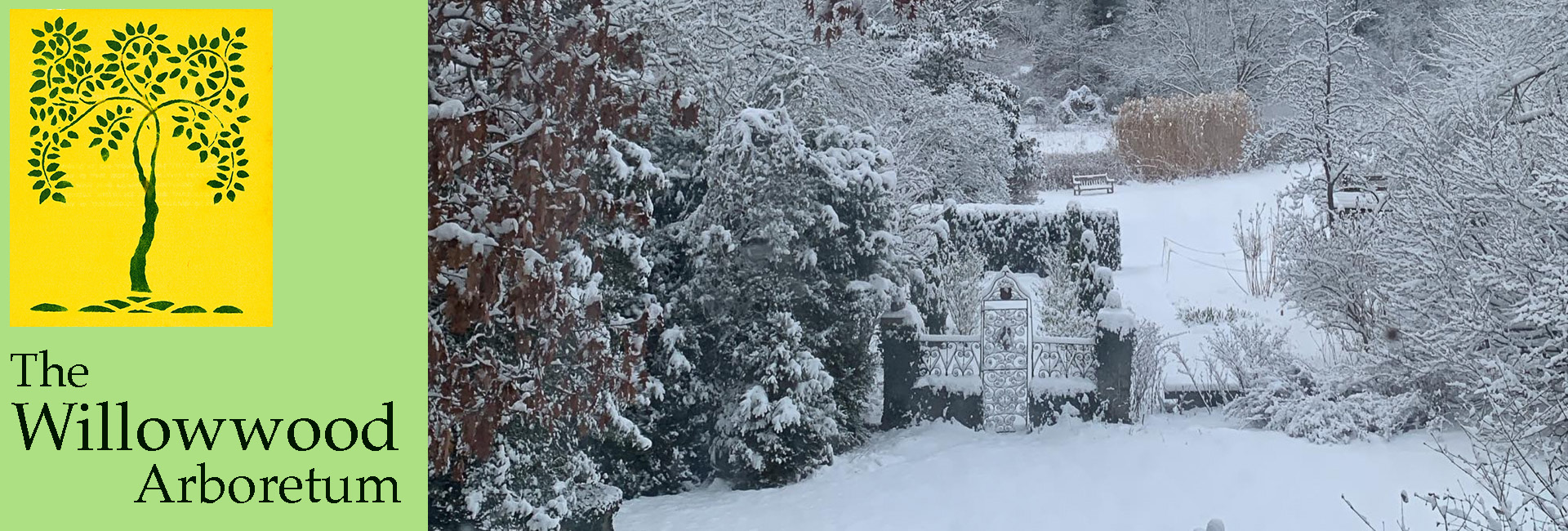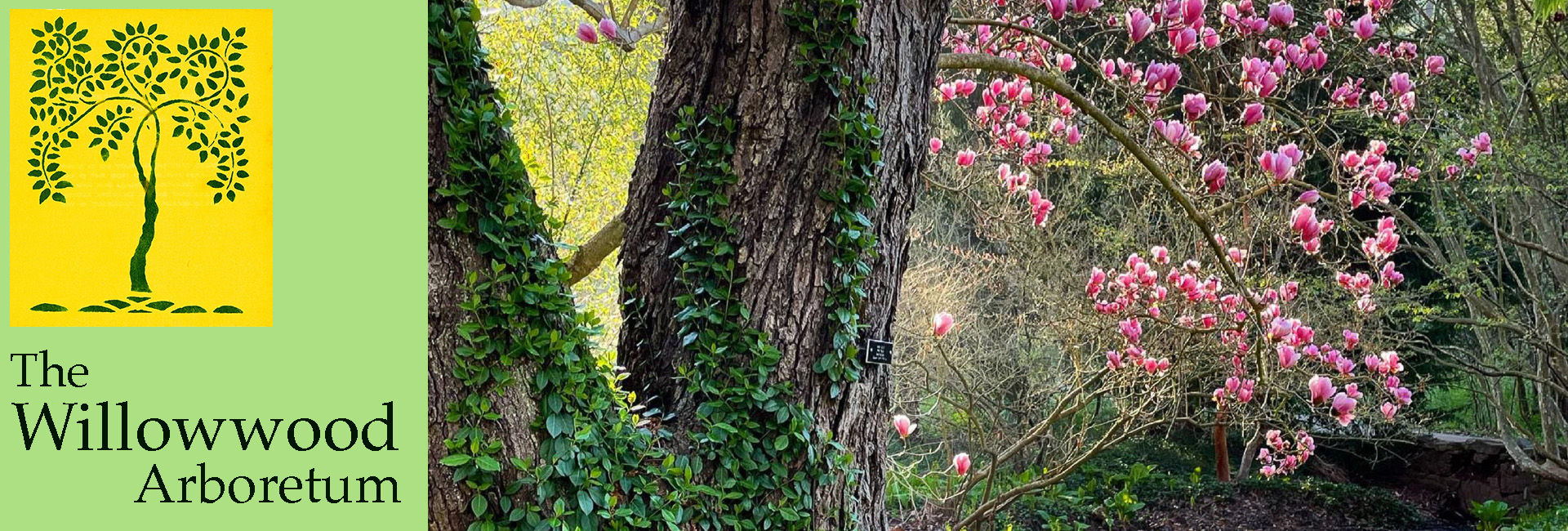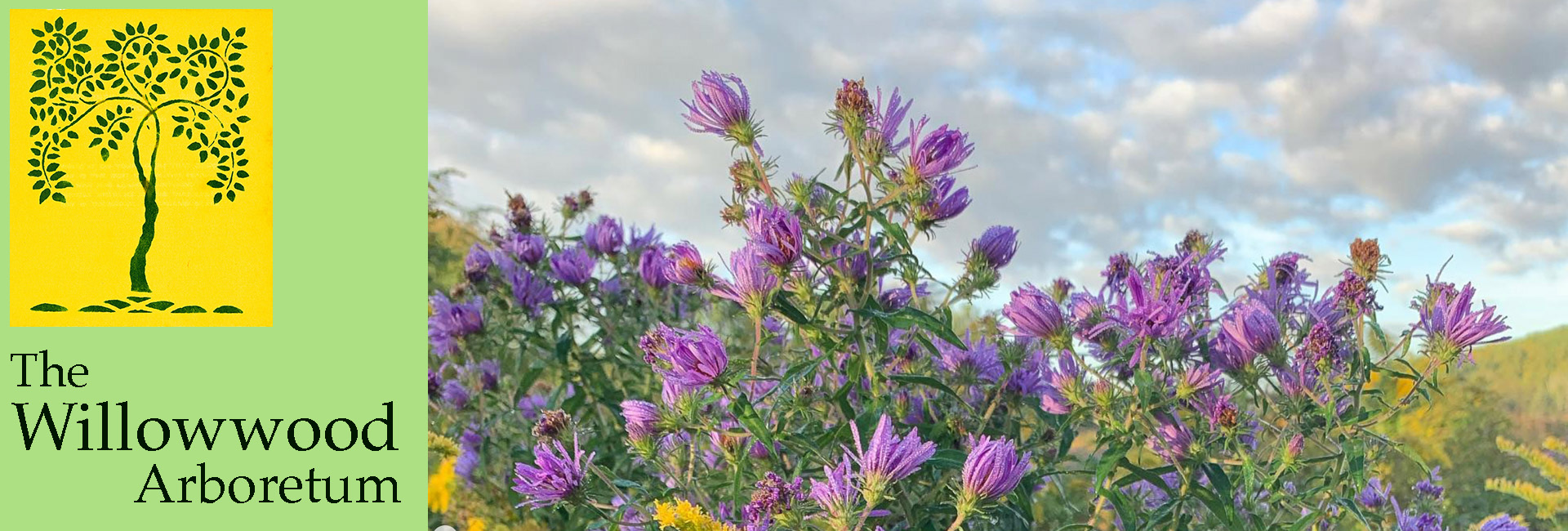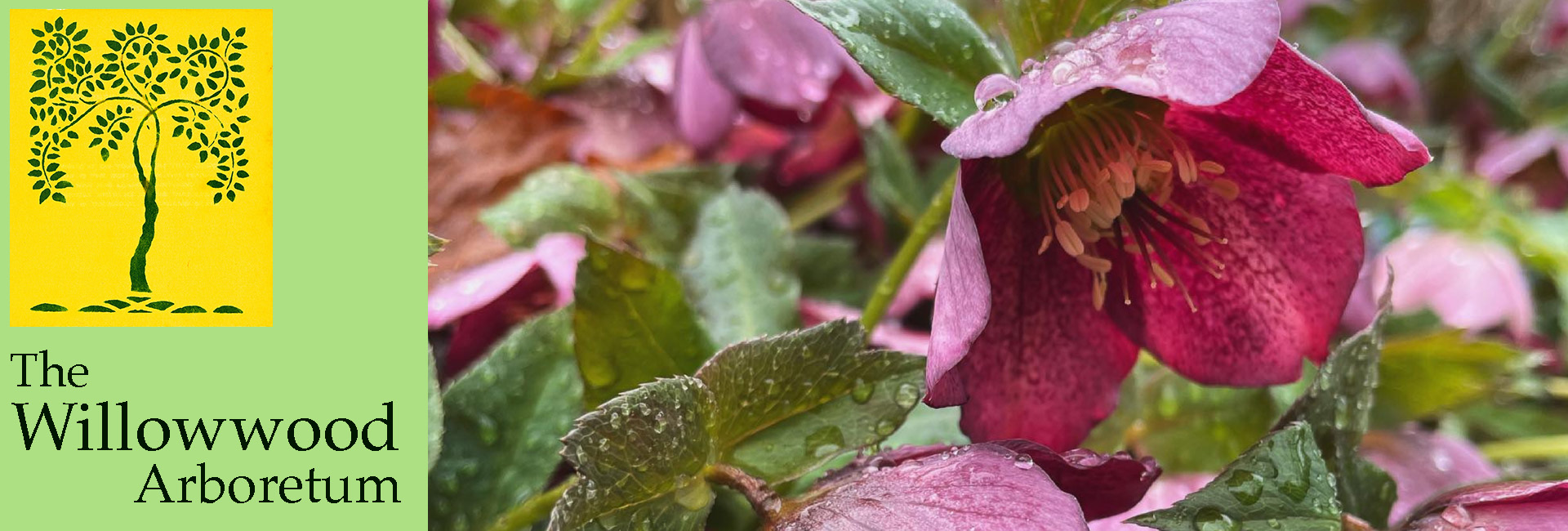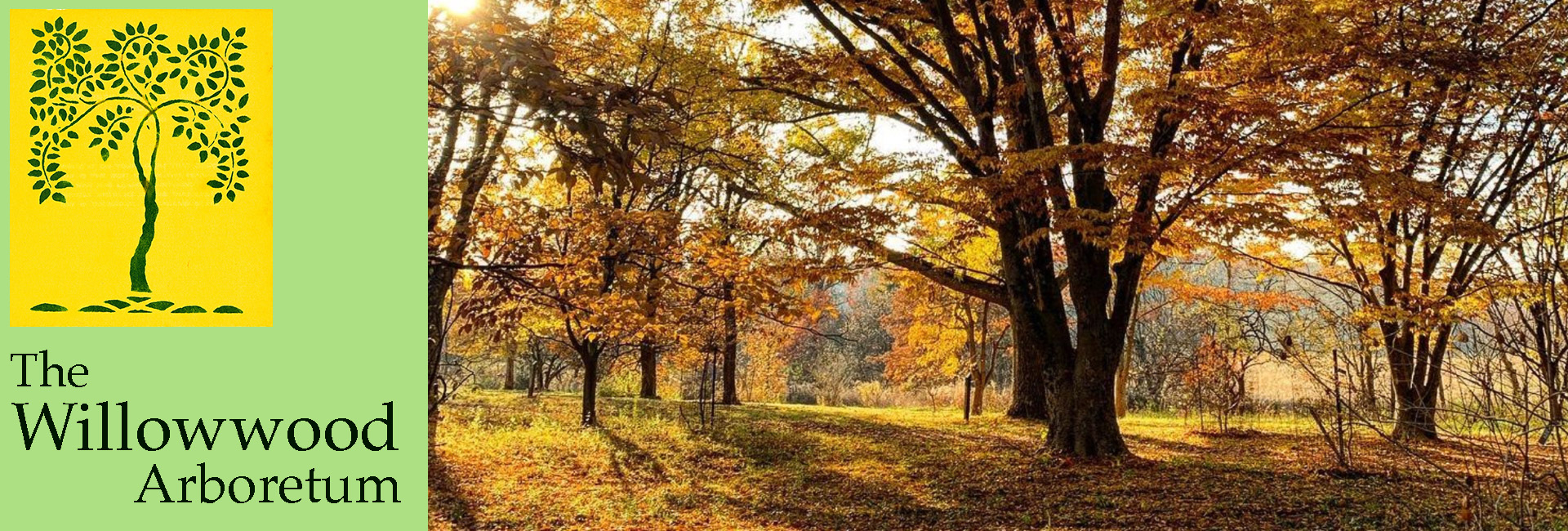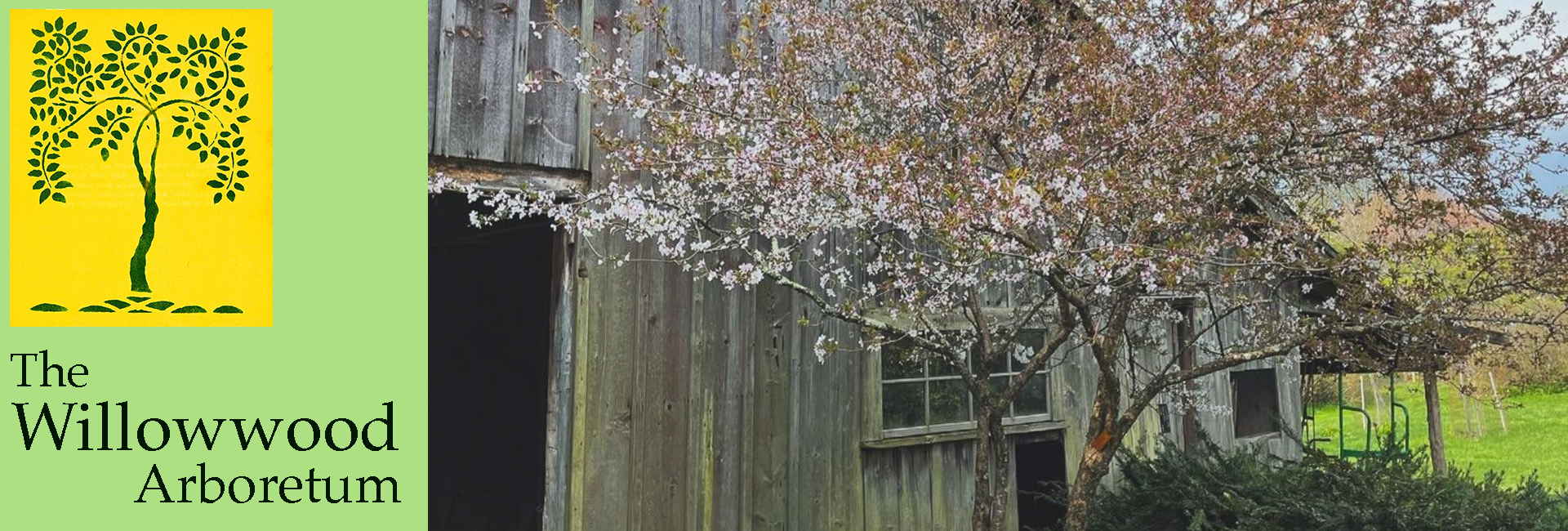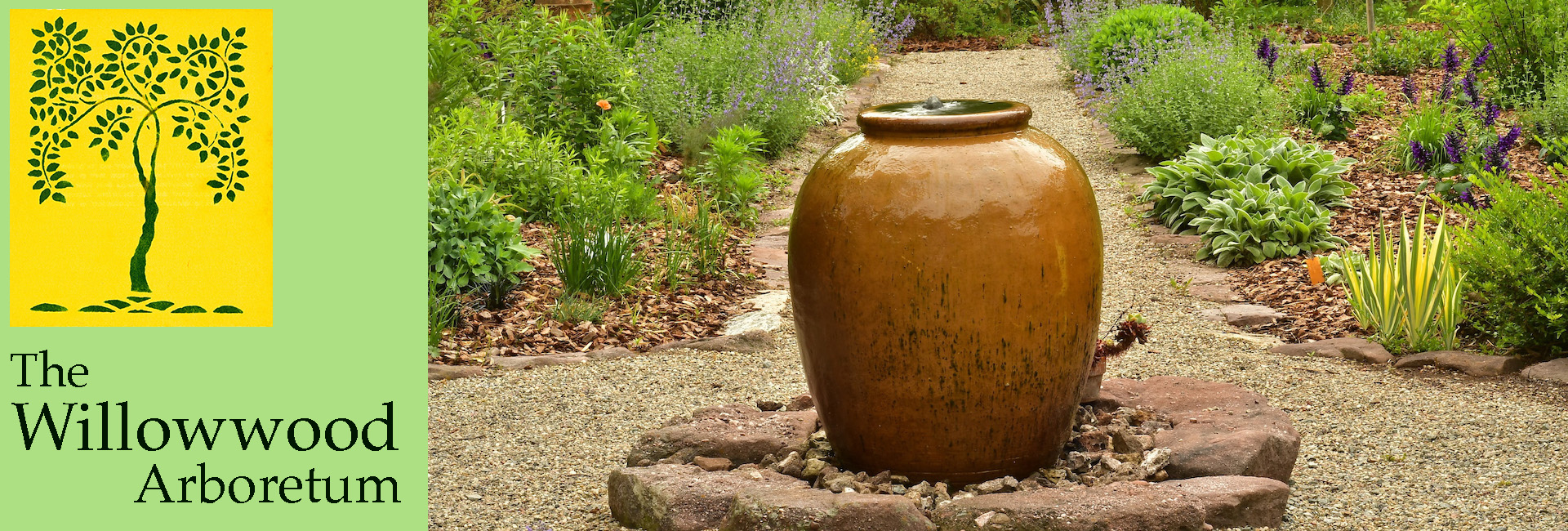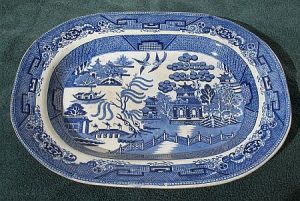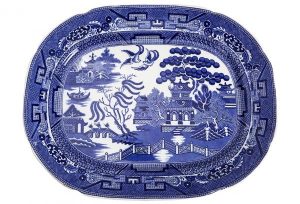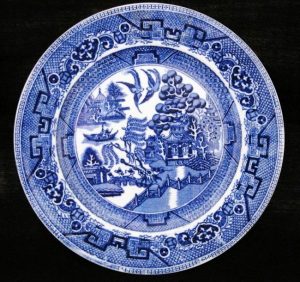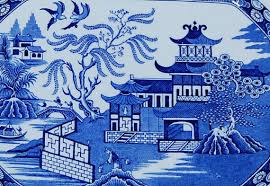Mother Nature offered all her choices in one afternoon – rain, sleet, snow, sunshine and rainbows but the staunch and happy party go’ers wrapped in down and wellies enjoyed the wine tasting, hors d’oeuvres by Ross and Owren, silent plant sale and music by the wonderful TEN of the NY University Glee Club.
Blog
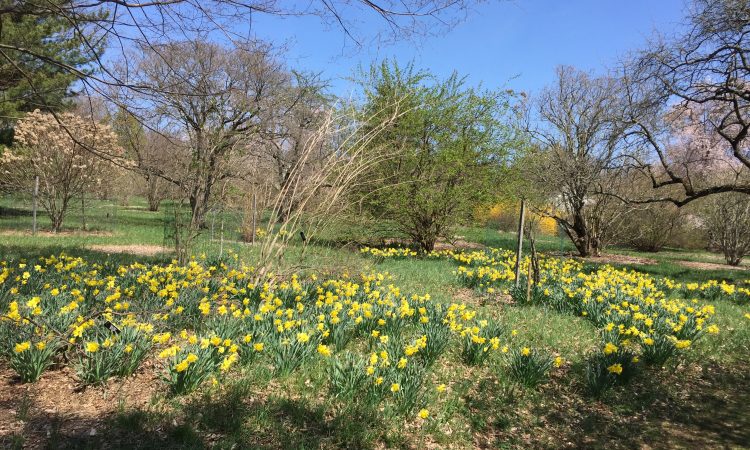
The Sun is shining! Daffodils are blooming! April 8
Cool, wet weather in March slowed down our spring explosion, but activity in the gardens and landscape is starting to heat up again. The long range forecast for the week is sun and warmth! Daffodils (Narcissus sp.) are poised to be a prime attraction during the next couple of weeks and Willowwood’s collection contains over 40 cultivars. Over 1000 ‘Pistachio’ bulbs – a trumpet daffodil were planted last Fall to add to the collection! These happy yellow first signs of Spring range from dainty, solo flowers to clusters of thousands of blooms. Glory-of-the-snow (Chionodoxa luciliae) complements the daffodils and delights with sweeps of bright blue. The swelling buds of magnolias (Magnolia sp.) and cherries (Prunus sp.) promise more even more color in the coming weeks. Take a walk through the Orchard, Woodwalk, and Hillside Pasture to see these signs of spring and much more.
Be sure to walk by the propagation house and peek through the glass for a glimpse of pansies, violas, and numerous annuals being readied for the spring and summer seasons!
A Sweet Garden New Jersey Wedding at Willowwood Arboretum
BY TINA ELIZABETH PHOTOGRAPHY
Juliane and Brendan’s New Jersey wedding at Willowwood Arboretum is just too sweet for words. And the fact that the color palette features the perfect mix of soft orange, green and white …well, it’s giving us all the spring feels today!
Read the rest of this wonderful article and view the beautiful pictures of Juliane and Brendan’s wedding at Contemporary Weddings Magazine’s site.
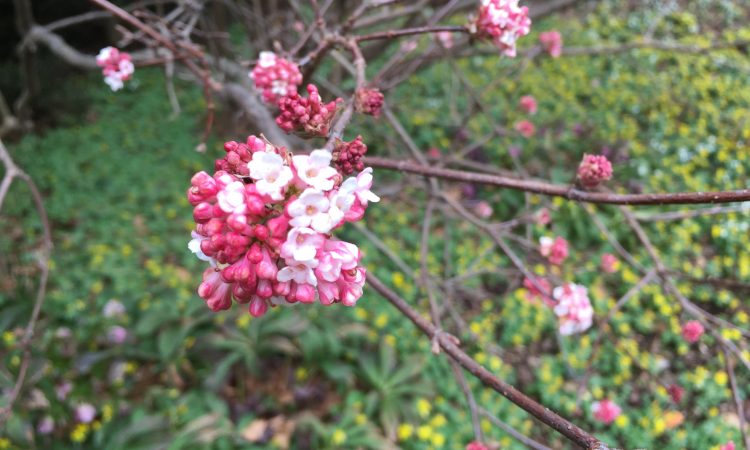
Early March 2017
The latter half of February brought unseasonably warm days and gave us an early glimpse of our springtime blooms. We head into March with early flowering bulbs promising a wonderful spring.
Winter aconite (Eranthus hyemalis) was the first to surface, with bright yellow drifts brightening the landscape around the Tubbs House and surrounding gardens. Crocuses (Crocus) and snow drops (Galandthus nivalis) emerged later and added lavender and white accents. Throughout the rockery, there are hidden treasures such as Persian violet (Cyclamen hederifolium) waiting to be discovered.
In the Cottage Garden, look for the swelling pink buds of fragrant viburnum (Viburnum farreri) mixed in among the witch hazels (Hamamelis). Fragrant viburnum is a native of northern China. If you have any in your garden, it makes for a pleasing cut stem if brought inside for forcing. The blooms will be appreciated indoors, as we likely face many more cold mornings before warm weather is here for good.
Around the corner from the Cottage Garden, on the south side of the stone cottage, is winter jasmine (Jasminum nudiflorum) cascading down the wall.
Wander into the conservatory to check out several cultivars of camellias (Camellia). The pink camellia ‘Berenice Boddy’ is especially floriferous. Scattered throughout the conservatory are the tubular flame-like flowers of lachenalia (Lachenalia bulbifera). These flowers are held on spikes above the foliage and are a visual contrast to the cool whites and pinks of the camellias.
As the weather improves, we will be adding new bloom reports to this page.
Willow Ware at Willowwood
Highlights from the Decorative Arts Collection
By Dr. Lesley Parness, Retired MCPC Superintendent for Horticulture Education
The Tubb’s brothers keen interest in the decorative arts also included the practical, everyday items of life. At Willowwood, their interest in all things Asian is reflected in statuary, paintings and even dinnerware. A cupboard near the Dining Room stores the typical family daily use Willow Ware dishes, including dinner and serving plates, cup and saucers, bowls, sugar pots, creamers and even some very sweet egg cups which we imagine held freshly laid eggs from the families chicken coop. Some are chipped, others marked with the tracery of use, they bare witness to the fact that Willow Wood was a true home, well-used and the Dining Room, the heart of it.
The Blue Willow pattern is one of the most recognizable tableware patterns ever produced. First introduced in England in the late 18th century, it is still popular today. The pattern evolved from Chinese landscape painting and contains multiple elements: a mandarin’s pagoda and garden; the mandarin and his hunting party on a bridge; a fisherman who rescues the lovers; the lovers’ hideaway; two birds representing the lovers; a crooked fence and, of course, the Willow.
The Chinese first produced porcelain using kaolin, a local clay. In the 13th century, Chinese craftsmen used Iranian cobalt to create a vibrant blue and white finish. It is believed that the original Willow pattern was used by the secret Hung society to communicate their propaganda and plans. Manchu rulers discovered this and destroyed all of the Willow ware they could find, but having been introduced into England by that time, it was later reintroduced into China in the 19th century.
From the late 17th to the early 18th century, England had begun importing inexpensive Chinese dinnerware, including a blue and white pattern called “Two Birds,” the “parent” of the Willow pattern. Over time, many English china producers created their own Willowware including Minton, Spode and Worchester. The “Blue Willow” china pattern became popular in Europe and America, which created a high demand for the pieces. even today, Blue Willow is a stock pattern in many stores.
The romantic legend behind the Willow pattern is said to have been invented by English pottery houses as an 18th century marketing tool. It tells of a Chinese girl from a Royal family who was promised in marriage by her father to a Duke. However, she fell in love with a lowly accountant in her father’s court. Her father was so angry that he constructed a fence around his house so his daughter could not meet with her lover. The Duke, bearing jewels as gifts, traveled to the girl’s house in a boat. The wedding was set for the day after the Willow tree shed its blossoms. On the evening of the day that the Willow shed its leaves, the lovers escaped, making off with the jewels. The two ran over a bridge and escaped to safety on an island where they lived happily for a number of years. The jilted Duke, continued searching for them and upon discovering their hiding place, he sent soldiers to capture the lovers and put them to death. The Gods then intervened and transformed the lovers into a pair of doves or lovebirds.
This Chinese poem commemorates that story:
Two birds flying high,
A Chinese vessel sailing by,
A bridge with three men, sometimes four,
A Willow tree, hanging o’er.
A Chinese temple, there it stands,
Built upon the river sands.
An apple tree, with apples on,
A crooked fence to end my song.
Can you find these design elements in these images of Willow Ware?
